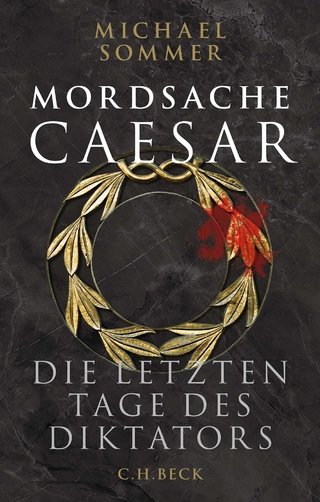
All the Emperor's Men
Roman Soldiers and Barbarians on Trajan's Column
Seiten
2024
Oxbow Books (Verlag)
978-1-84217-300-8 (ISBN)
Oxbow Books (Verlag)
978-1-84217-300-8 (ISBN)
Rome's stunning Trajan's Column, completed in 113CE, commemorates the emperor Trajan's wars. This beautifully-illustrated book explores the reliability of the Column as a historical source in documenting Trajan's popularity and the Roman armies at war.
Trajan's Column, set up in the heart of Rome, was completed in 113 CE to commemorate the emperor Trajan's wars across the Danube. Its reliefs provide a uniquely detailed picture of the army at war in perfect harmony with Trajan who in his own lifetime and forever after was accounted 'The Best of Emperors'. The sculptures are a panegyric to military achievement of the troops and to leadership by their emperor, but, much more than this, they have exerted an enormous influence on modern perceptions of Roman art, architecture, warfare, politics, religion, ethnography and geography.
The author's research answers questions which have been asked about Trajan's Column since the first studies of the 16th century. How were the reliefs planned and executed? Can they be used as a reliable historical source for Trajan's reign? How accurate is their depiction of the Roman army at war? What does the Column reveal about the political balance between emperor and army, and about Rome's attitude to the 'barbarian'?
The Column's pedestal reliefs depicted more than 600 captured barbarian trophies, and its 200m helical frieze represents 2600 human figures engaged in frontier warfare. Never before has this vast mass of material been studied in detail, in its entirety, using modern methods of recording, comparison and analysis. The author was granted unprecedented access by the Rome authorities to scaffolding erected around the Column for conservation studies, allowing detailed photographic evidence to be collected as well as the chance to study the whole monument at close hand. This book will be of interest to researchers and students of Roman imperial history, art, and the city of Rome.
Trajan's Column, set up in the heart of Rome, was completed in 113 CE to commemorate the emperor Trajan's wars across the Danube. Its reliefs provide a uniquely detailed picture of the army at war in perfect harmony with Trajan who in his own lifetime and forever after was accounted 'The Best of Emperors'. The sculptures are a panegyric to military achievement of the troops and to leadership by their emperor, but, much more than this, they have exerted an enormous influence on modern perceptions of Roman art, architecture, warfare, politics, religion, ethnography and geography.
The author's research answers questions which have been asked about Trajan's Column since the first studies of the 16th century. How were the reliefs planned and executed? Can they be used as a reliable historical source for Trajan's reign? How accurate is their depiction of the Roman army at war? What does the Column reveal about the political balance between emperor and army, and about Rome's attitude to the 'barbarian'?
The Column's pedestal reliefs depicted more than 600 captured barbarian trophies, and its 200m helical frieze represents 2600 human figures engaged in frontier warfare. Never before has this vast mass of material been studied in detail, in its entirety, using modern methods of recording, comparison and analysis. The author was granted unprecedented access by the Rome authorities to scaffolding erected around the Column for conservation studies, allowing detailed photographic evidence to be collected as well as the chance to study the whole monument at close hand. This book will be of interest to researchers and students of Roman imperial history, art, and the city of Rome.
Jon Coulston is Senior Lecturer in the School of Classics, University of St. Andrews. His research specialisms focus on Roman army studies and military equipment; ancient warfare; Roman provincial archaeology; Hadrian's Wall; and Roman art and architecture, especially stone sculpture. He has contributed to numerous volumes, including The Oxford Dictionary of Late Antiquity (2018).
| Erscheint lt. Verlag | 31.12.2024 |
|---|---|
| Zusatzinfo | approx 200 illus and plans |
| Verlagsort | Oxford |
| Sprache | englisch |
| Maße | 189 x 246 mm |
| Themenwelt | Geisteswissenschaften ► Archäologie |
| Geschichte ► Allgemeine Geschichte ► Altertum / Antike | |
| ISBN-10 | 1-84217-300-6 / 1842173006 |
| ISBN-13 | 978-1-84217-300-8 / 9781842173008 |
| Zustand | Neuware |
| Informationen gemäß Produktsicherheitsverordnung (GPSR) | |
| Haben Sie eine Frage zum Produkt? |
Mehr entdecken
aus dem Bereich
aus dem Bereich


